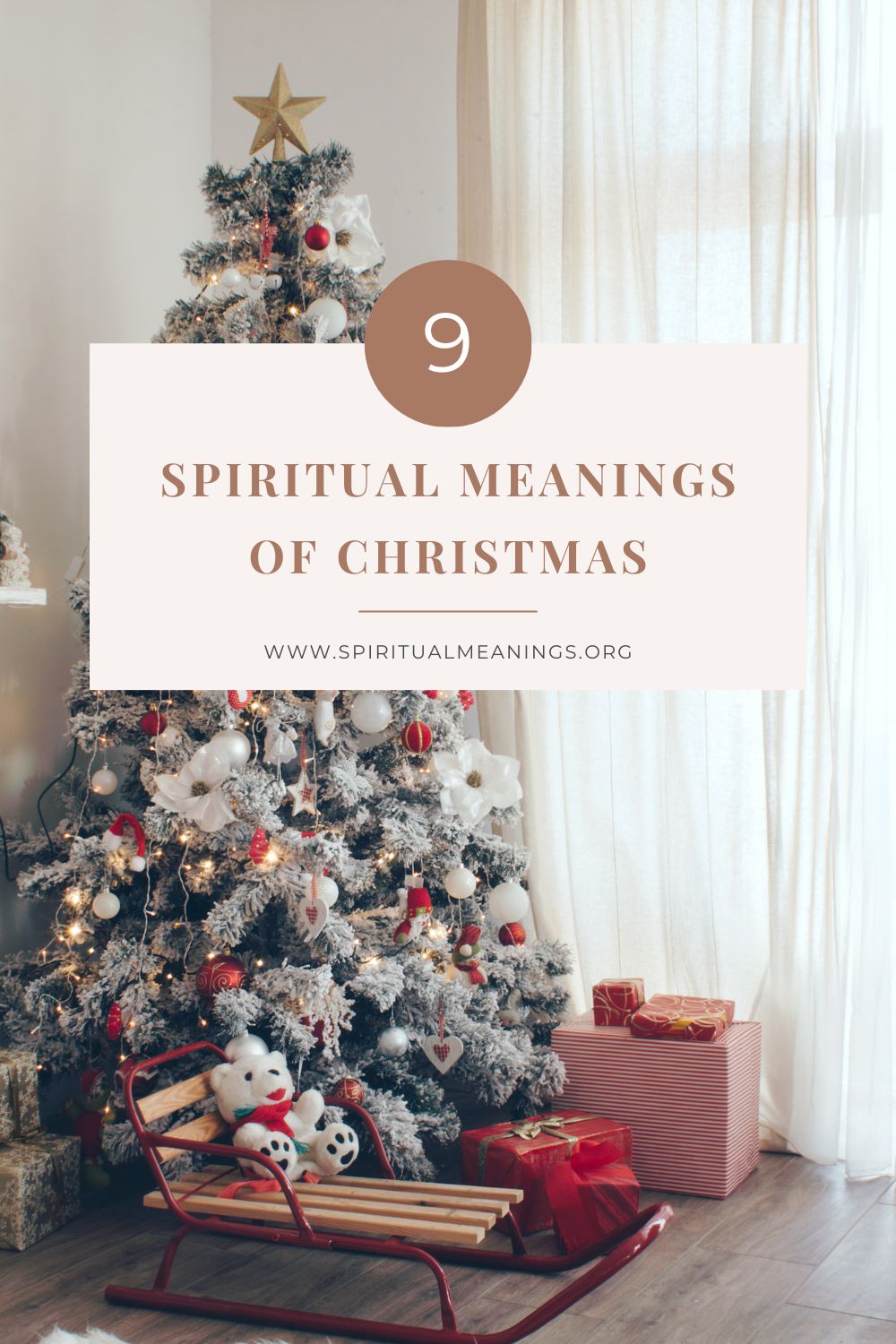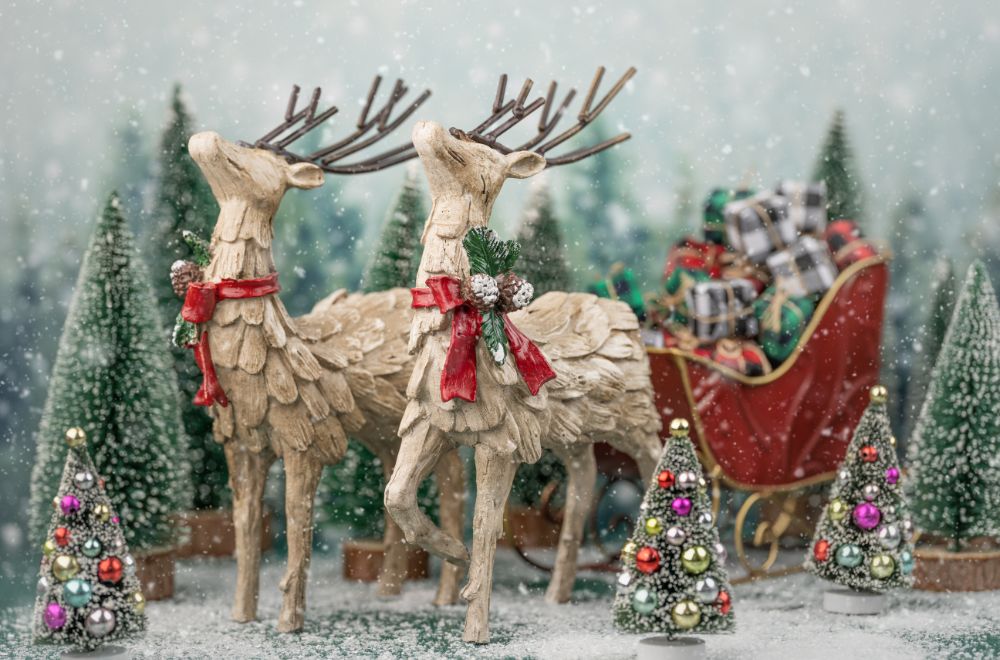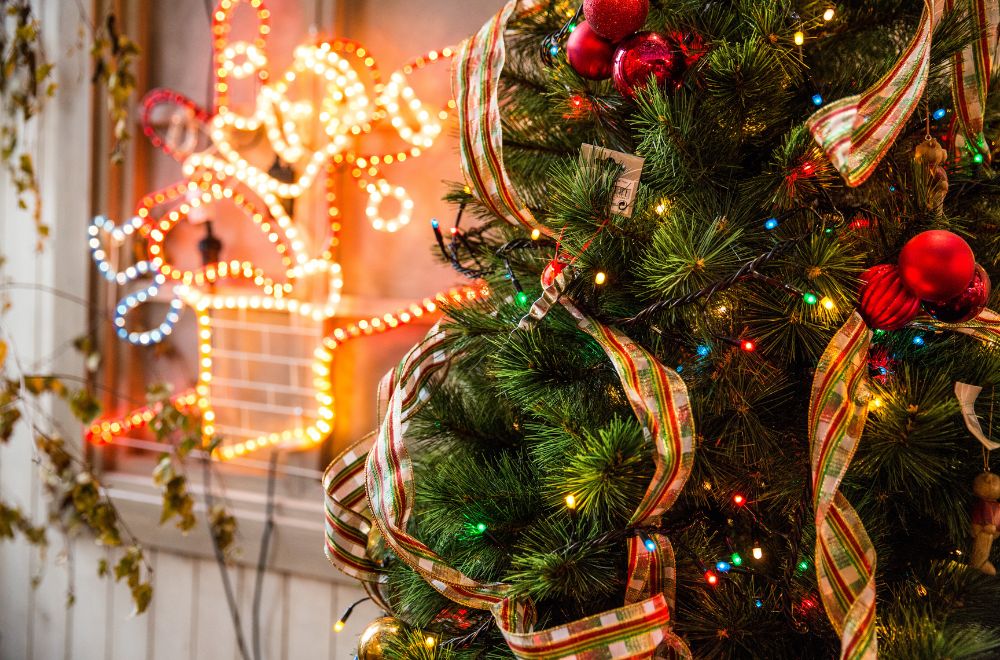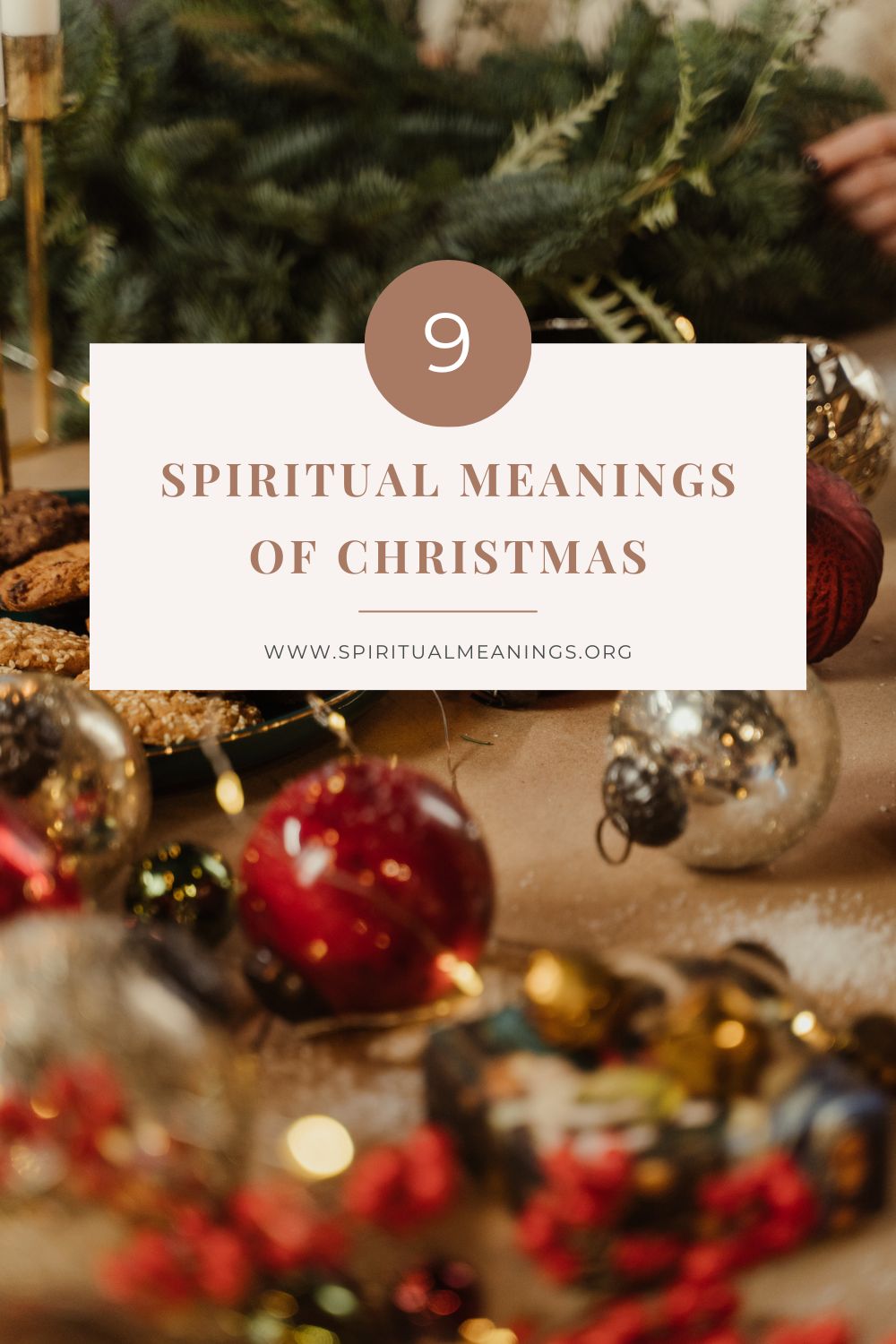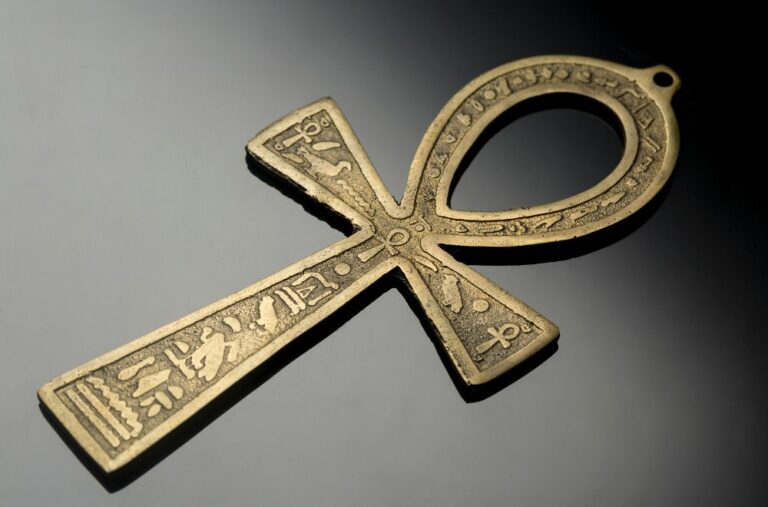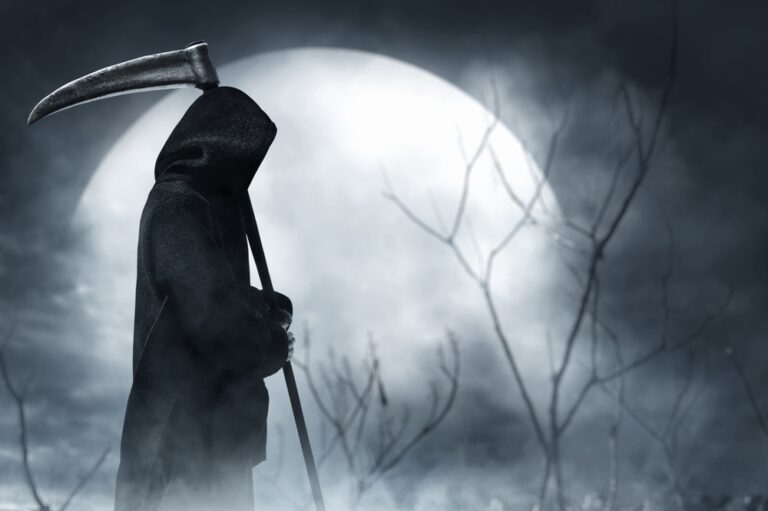Most people have a good idea of what Christmas means to them, either as a religious or secular festival, but to investigate some of the deeper significance of Christmas celebrations and traditions, in this post, we look at the details of the spiritual meaning of Christmas.
Christmas Spiritual Meanings
1. The birth of Jesus
The main meaning of Christmas is that it’s a Christian festival celebrating the birth of Jesus.
According to Christian tradition, Jesus’ parents, Mary and Joseph, had to travel to Bethlehem for a census. When they arrived there, they found that there was nowhere to stay, so Jesus was born in a cowshed and placed in a manger.
According to the version of the story told in the Gospel of Matthew, he was then visited by three wise men – or magi – who brought gifts of gold, frankincense and myrrh.
Many Christmas traditions, including the Nativity scene or crèche and the Nativity play, stem from this story.
The date of Christmas was settled in the fourth century as a way to resolve the inconsistencies between the various calendars in use, so the date doesn’t necessarily represent the exact date of Jesus’ birth.
The date chosen coincides with the traditional date of the winter solstice on the Roman calendar and is also exactly nine months after the Annunciation, which falls on 25th March, the date of the spring equinox.
Eastern Christian churches celebrate Christmas on 25th December according to the Julian calendar – which means it falls on 7th January according to the Gregorian calendar.
2. God coming into the world in the form of a man to atone for our sins
For Christians, the exact date of Christmas and celebrating Jesus’ “birthday” is less significant than what it represents – that is, God coming to Earth in the form of a man, his son, to atone for the sins of humankind.
This is one of the central tenets of the Christian faith, and what is most important is remembering God’s sacrifice and His love for mankind that it represents.
For this reason, an important aspect of Christmas for believers is to attend a church service, and indeed, the very word “Christmas” is derived from “Christ’s mass”. For the devout, this aspect of Christmas at least as important as other traditions such as gift-giving.
3. Advent
Advent is the period leading up to Christmas that involves certain practices and observances by Christian believers, including daily prayers, church services, fasting and many of the other traditions that are now associated with Christmas.
According to most denominations, advent begins on the fourth Sunday before Christmas and ends on Christmas Eve, representing the preparation for the coming of Christ.
The coming of Christ is taken to have three meanings. First, it refers to the physical birth of Jesus in Bethlehem; second, it means the metaphorical coming of Jesus into the hearts of the faithful; and third, it refers to the Second Coming of Christ and the Day of Judgement.
One tradition associated with Advent is the lighting of an Advent wreath. This tradition was first instigated in Germany as a way to occupy impatient children who were waiting for Christmas – originally, the wreath contained enough candles for one to be lit each day.
The wreath itself is rich with symbolism. The crown symbolizes victory while the round shape represents the return of the sun. The four candles represent the four Sundays of Advent, and its green color represents life and hope.
More specifically, fir is symbolic of strength while laurel represents victory over sin and suffering. Since neither loses its leaves, they are also both symbolic of the eternity of God.
The Advent calendar has similar origins, although most now start on 1st December rather than on the first day of Advent. However, for many children, the Advent calendar has lost its religious meaning and is now seen simply as a countdown until the arrival of Father Christmas.
4. The 12 Days of Christmas
As well as Christmas Day itself, the Christmas period encompasses the Twelve Days of Christmas, also known as Christmastide.
The First Day of Christmas is Christmas Day, the 25th of December, and the last day is the 5th of January, known as Twelfth Night or Epiphany Eve.
Nowadays, many of the original customs from the 12 Days of Christmas are no longer kept.
However, the 26th of December, known as Boxing Day, is still a public holiday in the UK and many countries in the Commonwealth.
It is traditional to eat plum pudding and roasted goose and to drink mulled wine during the early part of this period, a tradition that comes partly from Dickens’ A Christmas Carol.
It is also traditional to take down Christmas decorations before or on 5th January, and taking them down later than this is considered bad luck.
Some people continue to give gifts on each of the 12 Days, and each day, you can also make a wish for the corresponding month of the coming year.
5. Christmas meal
Christmas is a traditional feast day in the Christian calendar, and nowadays, the Christmas meal is an important part of Christmas celebrations, even for the non-religious.
For many people, the Christmas meal represents a time of family reunion when family members who might not have seen each other for a long time come together to share food.
The food eaten varies greatly from country to country – but what is important is the sense of reunion, spending time together and renewing family bonds.
6. Gift giving
Most people know Christmas as a time of gift-giving, and many people, especially those who choose to focus on the religious meaning of Christmas, decry the commercialization of Christmas that this has brought about.
However, the giving of gifts at Christmas has some of its origins in the Middle Ages, when it was traditional for gifts to be given between people who had a legal relationship – for example, landlords and tenants or business owners and employees.
Later, in the 19th century, the idea of Christmas being a time for goodwill, generosity and kindness became prevalent, especially through works such as Dickens’ A Christmas Carol, which he wrote in 1843.
This novel was hugely influential on many aspects of Christmas, and it was partly from this novel that the custom of giving gifts to family members grew.
The concept of giving gifts at Christmas is also partly derived from the gifts brought to Jesus by the three magi – and it may also have been influenced by the ancient Roman tradition of giving gifts during the Saturnalia festival, which fell at a similar time of year.
7. Father Christmas
One of the most unmistakable icons of Christmas is Father Christmas, also known by many other names, including Santa Claus and Saint Nicholas – and this character is a blend of many diverse traditions.
Saint Nicholas was a 4th-century bishop of Myra, located in what is now southwestern Turkey, who was known for his generosity, gift-giving and caring for children – and he was part of the inspiration for the character.
Subsequently, the tradition of somebody dressed in bishop’s clothes accompanied by helpers who asked about children’s behavior to decide if they deserved a gift started in the Netherlands and spread from there from the 13th century on.
Indeed, the name Santa Claus comes from Sinterklaas, which is Dutch for Saint Nicholas.
However, the modern image of Father Christmas as a rotund jolly old man dressed in red and with a long white beard was created in North America and especially in New York at the end of the 19th century.
This was partly an expression of New York’s non-English past and its connection with its origins as a Dutch colony known as New Amsterdam.
8. Holly, ivy, mistletoe, Christmas wreaths, Christmas trees and other decorations
Christmas decorations are an essential part of the festive season, and many of the traditional decorations used have spiritual significance.
For example, the traditional colors of red, green and gold all carry deeper meanings – red symbolizes the blood of Christ, green is for eternal life and gold, as one of the gifts received by Jesus, symbolizes royalty.
The Christmas tree, an evergreen that doesn’t lose its leaves, is also symbolic of eternal life, and it also has some connection to the pre-Christian pagan tradition of tree worship and the winter solstice.
Mistletoe also has a connection to pre-Christian practices and was used to symbolize fertility –this is why lovers are supposed to kiss underneath it. The Romans also believed that mistletoe brought peace, love and understanding.
Holly, on the other hand, represents Jesus – due to the thorns and the red berries, which are reminiscent of blood – while ivy symbolizes Mary. Holly was also worn on the head by pagan druids in pre-Christian times to offer protection against evil spirits.
9. Pre-Christian practices and Yule
Before the arrival of Christianity, a winter festival known as Yule was celebrated by Germanic peoples such as the Anglo-Saxons and the Norse – and the name of this festival has now become another word for Christmas.
Nowadays, some modern pagans celebrate Yule according to pre-Christian traditions, and Christmas itself can be seen as the adoption and adaptation of pre-existing pagan traditions as part of the Christianization of the Germanic peoples.
A religious and secular festival and a happy time of the year
Although Christmas is primarily a religious festival celebrating the coming of Jesus, it is also a secular festival that is celebrated by non-Christians.
The many traditions associated with it have a wide range of origins, making it a happy time of goodwill and family reunions that is accessible to the religious, the spiritual and the non-religious alike.

